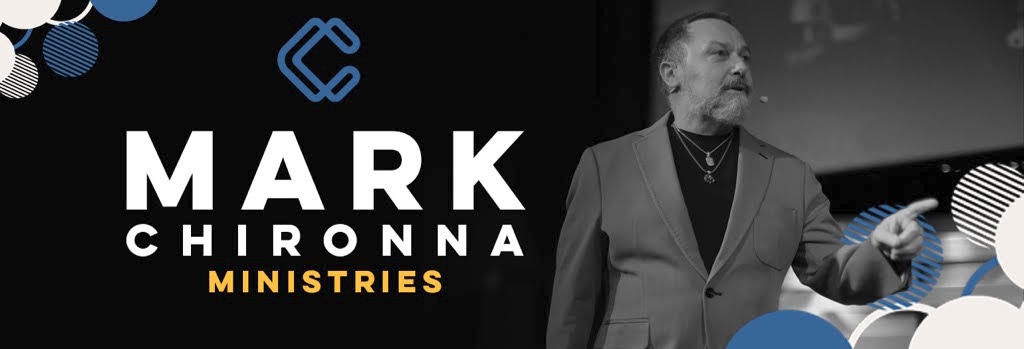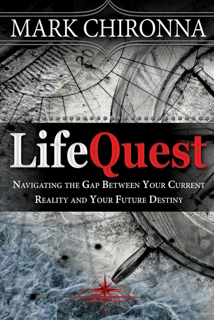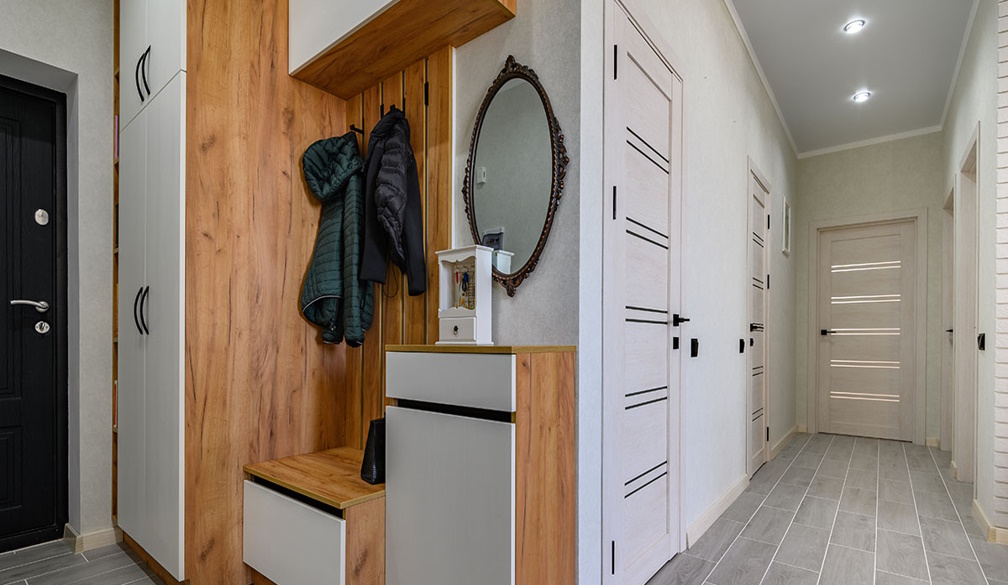The Cult of Personality: The Erosion of Truth
- Written by Mark J. Chironna, PhD.

It begins innocently enough. A face comes to dominate attention, on a screen, in a room, in the words people echo. A voice grips listeners, not only for what it says but for the aura it projects. At first, the fascination seems harmless, admiration, even affection. Over time, it becomes unavoidable, woven into the daily imagination. The person ceases to be one among many. They become a symbol, an atmosphere, a lens through which reality is interpreted.
This is the anatomy of a cult of personality. It shows itself wherever charisma outweighs character, wherever image eclipses substance. We see it in the entertainment world, where celebrity becomes a kind of secular priesthood. We see it in business, where the myth of the lone visionary overshadows collective effort. We see it in spiritual movements, where the teacher or leader takes on the aura of divinity. And yes, it emerges in politics too, and yet, bear in mind, that politics is only one theater in a much larger drama.
What begins as admiration can slide into devotion, and devotion into dependence. Once that happens, critique feels like betrayal. The question is no longer What is true? but Whose image carries the truth for us?
Consider this from contemporary history: Saparmurad Niyazov, who renamed himself Turkmenbashi, “head of the Turkmen”, ruled Turkmenistan after the collapse of the Soviet Union. His rise was meteoric, his power absolute. His image was everywhere: Nebuchadnezzar-like statues of gold that rotated to face the sun, his likeness printed on liquor bottles, currency, and watches. He banned ballet, opera, and even beards, branding them “un-Turkmen.” He renamed months of the year after himself and his mother. His semi-autobiographical Rukhnama was required reading in schools, government offices, and even driver’s license exams. By the early 2000s, half the nation’s GDP was funneled into prestige projects like a desert lake and an ice palace, while hospitals outside the capital were shuttered and education collapsed. Niyazov had not merely consolidated power, he had made himself unavoidable.¹
The story of Turkmenbashi is extreme, yet it illustrates a broader truth: personality cults thrive by embedding a leader’s image into the very fabric of daily life. In time, questioning the leader feels like questioning reality itself.
What do we mean when we speak of personality? The word personality seems harmless. At its simplest, it refers to “the sum total of all the behavioral and mental characteristics by means of which an individual is recognized as being unique.”² It can describe charisma, attractiveness, or celebrity. Yet when paired with cult, the meaning sharpens. A “personality cult” is the deliberate cultivation of adulation, often political, where an individual’s persona outweighs both institutions and truth.
But personality is not always what it seems. Philosopher Dietrich von Hildebrand warned that true personality radiates from the integration of inner authenticity and outward expression. Such people carry a harmony of values that shapes their actions, speech, and presence. Yet there are also figures who project vitality, magnetism, or force, but in reality radiate something trivial or vain. “The power of emanating an atmosphere,” he wrote, “is not in itself a sign of true personality.”³ Charisma can dazzle, but without authenticity, it is hollow, a projection that gathers devotion without substance.
We are familiar, at least in passing, with what a hologram is. A hologram projects the illusion of depth, allowing us to see what looks like a three-dimensional figure. From one angle it appears lifelike, even uncanny in its realism. But move closer and the truth becomes plain: there is no body, no weight, no substance, only light bent into form. It gives the appearance of presence while lacking the reality of it.
So it is with counterfeit charisma. It shines, it captures attention, it can even create the sensation of depth and authenticity. But beneath the glow, it is only a projection of what James Hollis might call a provisional false self. It is a hollow-gram, an image without substance, a performance mistaken for presence, devotion misdirected toward what cannot endure.
How do things evolve from sects to cults? Sociologists have long wrestled with the differences between religious “sects” and “cults.” Max Weber described sect leaders as figures marked by charisma, an aura of extraordinary qualities. But cults, as later analysis made clear, move beyond charisma into deification. In sects, the leader is set apart as gifted; in cults, the leader becomes godlike. Once the leader dies, most cults collapse, for a god cannot be replaced.⁴
Certain features make cults especially dangerous. They isolate members from outside information, demand total obedience, and concentrate power in the hands of leaders who often display narcissistic or psychopathic traits. Over time, unchecked authority leads to volatility. Cults employ language that normalizes violence, and many develop militant inner circles willing to enforce loyalty.⁵ What begins as devotion ends as domination.
In depth psychology, projection describes the process by which aspects of the unconscious, fears, desires, unacknowledged traits, are cast outward onto another person or group. Individually, this is how we mistake our own inner conflicts for qualities in someone else. Collectively, the same dynamic operates with charismatic figures. A leader or celebrity becomes the screen onto which a people project both their longings and their shadow: their desire for certainty, greatness, and belonging, but also their unacknowledged rage, fragility, and fear.
This explains why counterfeit charisma can be so magnetic. The leader is not simply admired for their own qualities; they become the vessel of projection. The hollowness of the “hollow-gram” is filled by what the crowd pours into it. What is missing in the person is supplied by the fantasies of the many.
Kurt Lewin’s field theory helps us grasp this at a systemic level. Lewin argued that behavior is always a function of the interaction between the person and the environment, expressed in his famous equation B = f(P, E).⁶ He described this dynamic as a “life space,” a field of psychological and social forces that shapes what people perceive and how they act. In the context of a personality cult, the leader’s projected image and the crowd’s psychological environment reinforce one another. Each feeds the other, creating a closed field where devotion intensifies, dissent diminishes, and the hollow-gram comes to feel more real than reality itself.
In this way, projection and social field dynamics explain why counterfeit charisma can become indistinguishable from authenticity at the collective level. The hologram does not have to be real if enough people invest it with their longings. The field makes it feel real, even necessary.
No personality cult succeeds without crowds. In 1895, Gustave Le Bon’s The Crowd was published, and yet prophetically remains a chillingly prescient analysis of mass psychology. Le Bon was speaking into a France haunted by a century of upheaval. The French Revolution of 1789 and its bloody aftermath had already imprinted the dangers of mobs onto the national memory. The storming of the Bastille, the September Massacres, and above all the Terror under Robespierre revealed how swiftly a crowd could transform from citizens into zealots, consuming both enemies and allies in its fervor.⁷ The nineteenth century did little to quiet these fears: the revolutions of 1830 and 1848 once again filled the streets of Paris with barricades and blood, while the collapse of the Second Empire in 1870 and the birth of the Third Republic were themselves forged in chaos.
He was writing in the shadow of the Paris Commune of 1871, a brief but searing episode in which radical workers took control of the city after France’s humiliation in the Franco-Prussian War. To conservatives, the Commune was nothing less than an apocalypse of the masses, thousands killed, Paris set aflame, authority overturned.⁸ Le Bon saw in the Commune not just a political failure but a psychological revelation: crowds, once gathered, seemed to shed reason and conscience, becoming volatile, irrational, and destructive.9
But he was also writing in the midst of a new reality: the rise of universal suffrage. France had extended the vote to all men in 1848,10 and by the end of the century the Third Republic was governed through mass participation. To Le Bon, this democratization only confirmed his fears. If the crowd could destabilize a city in the streets, what would it do when handed the ballot box? He regarded socialism, syndicalism, and the new workers’ movements as proof that democracy risked turning politics into the permanent reign of the mob.
The anxieties of the fin-de-siècle gave his words further resonance. Europe trembled with fears of social degeneration, the decline of tradition, and the volatility of industrial cities.11 Le Bon could be merciless in his assessment of crowds. For him, civilization requires “fixed rules, discipline… forethought for the future, and an elevated degree of culture”11, all things, he argued, that crowds left to themselves “have invariably shown themselves incapable of realizing.”12 He likened them to “microbes which hasten the dissolution of enfeebled or dead bodies.”¹³ In other words, the masses do not rot civilization; they accelerate the decay of what is already weakened.
This is a striking and unsettling metaphor. Crowds, for Le Bon, reveal their destructive energy precisely when structures are brittle, institutions hollow, and culture enfeebled. At such moments, their power becomes catalytic: the weight of numbers dissolves what is already unstable. And here lies the warning for our own moment. The cult of personality flourishes not in times of civic health but in times of disintegration. Where institutions falter and cynicism spreads, charisma rushes in to supply the illusion of vitality. The crowd, in turn, invests itself in the projection of strength, hastening the decline of what it cannot itself sustain.
Le Bon’s suspicion of universal suffrage is understandable in light of the upheavals of nineteenth-century France, but it cannot be the solution. To abolish the right to vote is tantamount to the rolling back democracy. The vote is a hard-won safeguard of dignity, equality, and shared responsibility. To lose it is to replace one danger with another, far greater one.
But Le Bon still offers us a warning. The ballot box is not immune to the psychology of the crowd. The forces of projection, contagion, and spectacle can distort democratic processes just as easily as they can ignite a mob in the streets. The lesson, then, is not to retreat from democracy but to deepen it. If mass politics tends toward irrationality, the remedy is not to remove the masses from politics but to cultivate citizens who are capable of discernment, critical reflection, and resilience against manipulation.
Current claims about “rigged elections” resonate with the very vulnerabilities Le Bon described. Crowd psychology does not need evidence to change behavior. Projection turns doubts about a candidate into doubts about the process. Contagion spreads suspicion through repeated slogans and viral clips. Spectacle rewards outrage over verification. A cult of personality can then shift the battle from policies to perceptions and make loyalty to a figure feel more important than trust in institutions. The answer is not retreat from voting but deeper democratic practice: clear rules, transparent counting, public audits that can be checked by anyone, and steady civic formation that trains people to weigh claims, ask for proof, and hold both leaders and media to account.
And social media has amplified the very dynamics Le Bon feared, suggestion, contagion, and the erosion of reason. We find ourselves in a democracy vulnerable to spectacle, where image outweighs truth and personality overshadows principle. To reconcile Le Bon’s insights with our commitment to democracy is to acknowledge that voting rights are non-negotiable, but they must be joined to the harder work of civic formation: educating people not only to cast a ballot but to see through hollow charisma, resist the hypnosis of the crowd, and prize integrity over spectacle.
Le Bon’s error was to assume that the only way to guard against irrational masses was to restrict their participation. Our task is different: to recognize the same vulnerabilities without retreating from democratic life. What remains invaluable in his work is not his suspicion of suffrage but his dissection of the crowd itself. Here, his insights are far harder to dismiss. He saw with unnerving clarity how individuals, when swept into collective life, undergo a kind of psychic transformation.
An individual, when absorbed into a crowd, ceases to act as him or herself. He or she becomes part of a “collective mind,” prone to suggestibility, contagion, and hypnotic surrender. Isolated, a man may be rational, cautious, even cultivated. But in a crowd, such a person is swept into extremes. They can become barbaric, or heroic, or both.14
Le Bon emphasized that in crowds, “every sentiment and act is contagious.” Emotions are amplified, dissent is drowned out, and suggestion becomes irresistible. A crowd will chant, cheer, or rage in ways each member alone might reject. The transformation is so profound that “the miser becomes a spendthrift, the skeptic a believer, the honest man a criminal, and the coward a hero.”15
Modern rallies, mass movements, and even viral social media storms bear out Le Bon’s thesis. In the psychology of the crowd, reason yields to spectacle, and spectacle yields to power.
Eric Hoffer, writing decades later in The True Believer, sharpened the picture of what happens when crowds crystalize into movements. He observed that “all mass movements generate in their adherents a readiness to die and a proclivity for united action,” breeding “fanaticism, enthusiasm, fervent hope, hatred and intolerance.” No matter the doctrine—religious, political, or cultural, the mechanics are the same: blind faith, singlehearted allegiance, and a drive toward expansion. The fanaticism that fuels movements as different as Christianity, Islam, Communism, or Nazism can be viewed as one underlying force.16
Hoffer also noted the corrosive relationship between violence and fanaticism. It is often impossible to say which comes first, for “violence breeds fanaticism as much as fanaticism begets violence.” During the French Revolution, the bloodshed of the Terror required its perpetrators to believe more fiercely in the absolutes that justified their actions. Violence not only subdued their enemies, it intensified their own faith.17 This is why cults of personality so often escalate toward extremity: coercion strengthens conviction, and terror becomes the proof of loyalty.
Even the “man of words,” the intellectual who ridicules prevailing institutions, can unwittingly prepare the ground for fanaticism. By undermining authority and discrediting existing beliefs, he creates a hunger for new absolutes. The Enlightenment’s irreverence against throne and altar did not usher in a society of freethinkers but gave way to revolutionary and nationalist fanaticisms. “When the irreverent intellectual has done his work,” Hoffer warned, the disillusioned masses become ripe for a new faith, and “the best lack all conviction, while the worst are full of passionate intensity.”18
Here, the anatomy of the cult of personality becomes clearer: a crowd transformed into a movement, a movement sustained by projection, violence, and fanaticism, and a people swept into adoration that feels like necessity.
If crowds provide the fuel, media, in all its forms, provides the match. Marshall McLuhan’s famously said, “In a culture like ours, long accustomed to splitting and dividing all things as a means of control, it is sometimes a bit of a shock to be reminded that, in operational and practical fact, the medium is the message.”19 That reality continues to remain vital. His insight was that the form of communication matters more than the content it carries. The printing press didn’t just spread ideas; it fostered rationality and linear thought. Television didn’t just broadcast; it reshaped perception into immediacy and intimacy.
McLuhan anticipated our digital world, describing it as a “global village”20 where electronic media would retribalize society.⁸ Charisma once required proximity, rallies, speeches, parades. Today, it is broadcast, streamed, tweeted, and TikTok-ed into our consciousness. Leaders don’t need monuments of gold; they need viral clips. Media does not just transmit personality; it magnifies it, creating the illusion of intimacy, the sense that leaders speak directly into our homes and lives.
The deep concern regarding the cult of personality is that groupthink can lead to loyalty becoming blind devotion. A cult of personality isn’t just about spectacle; it’s about a group dynamic that shuts down dissent. Irving Janis coined the term groupthink to describe how highly cohesive groups, especially under directive leadership and cut off from outside perspectives, suppress critical thoughts in favor of harmony. The telltale signs: illusions of invulnerability, rationalizing away warnings, moral superiority, stereotyping outsiders, self-censorship, illusions of unanimity, pressure on dissenters, and “mindguards” shielding the group from objection. When this happens, decision-making becomes dangerously flawed, alternative ideas are ignored, risks go unexamined, and contingency plans vanish.21
Even today we see the echoes: political inner circles convinced they cannot be wrong; campaigns that silence criticism as disloyal; teams that become echo chambers rather than forums for scrutiny. In a cult of personality, groupthink becomes a tool of control, making the leader’s image the unquestioned anchor of consensus.
Guy Debord’s The Society of the Spectacle gives us the cultural anatomy of how image-based culture enables personality cults. He argued that in modern society, human relationships dissolve into representations, staged appearances replacing lived experience. We enter a world where “all that was once directly lived has become mere representation.”22
Debord saw the spectacle as more than media, it is a social regime, a way of living that enshrines commodity fetishism at the cost of authenticity. It alienates us, reducing our connections to passive consumption, and it transforms leaders into icons, more image than substance. In this world, personality isn’t just amplified, it is manufactured, commodified, and consumed.
Across history and cultures, this dynamic often crystallizes in the figure of the strongman, a leader who promises order in the midst of chaos, certainty in the face of doubt, and national renewal through the sheer force of his personality. Ruth Ben-Ghiat’s research on authoritarian leaders identifies four recurring themes. First, the strongman claims to save the nation from humiliation and crisis. Second, he asserts dominance, over enemies, rivals, even over women, as proof of his power. Third, he promises a community larger than the current nation, defined by blood or destiny rather than borders. And fourth, he claims not merely to represent the people but to embody them. “He does not just represent the nation,” Ben-Ghiat writes, “but embodies it and bears its sorrows and dreams.”23
This final step is the most dangerous. When the leader and the nation become one, disagreement is treason. Loyalty to the state becomes loyalty to the man. Institutions are hollowed out, and accountability is replaced with adoration.
What may be most disconcerting is how the dynamic has migrated into modern consumer culture. We inhabit what Leonard Sweet calls a “cult culture”, a world where celebrities are worshipped for being rather than for doing. The word “celebrity” itself comes from “celebrate,” and in this sense, we have learned to elevate people apart from achievement or virtue.24
This celebrity cult operates with the same mechanics as the political cult: projection, adoration, and spectacle. Fans track movements, clothing, relationships, and offhand remarks with religious devotion. The “gods” of culture are not leaders of nations but icons of music, film, sports, and social media. In both cases, the human impulse to worship attaches itself to charisma, even if it is disconnected from substance.
The cult of personality does not emerge in a vacuum. It flourishes in a cultural soil already rich in narcissism. In The Culture of Narcissism, Christopher Lasch observed that by the 1970s, Americans, weary of political solutions, turned inward. Lacking hope of improving their lives in meaningful ways, they pursued “psychic self-improvement”: jogging, eating health foods, taking dance lessons, dabbling in Eastern spirituality, learning to “relate.” Harmless in themselves, these pursuits, elevated to a philosophy of life, marked a retreat from politics and a repudiation of history. To live for the moment, Lasch argued, had become “the prevailing passion, to live for yourself, not for your predecessors or posterity.”25
This cultural retreat hollowed out the sense of historical continuity. Unlike the millenarian movements of the past, which drew strength from collective memory and hope for a future golden age, the new narcissism was ahistorical. It replaced faith in political or religious transformation with “transcendental self-attention,” a cultivation of the self as its own object of worship.26
Lasch pressed further. The collapse of traditional authority figures, fathers, teachers, preachers, did not free the self into maturity. Instead, it left individuals governed by what he called a “harsh, punitive superego,” rooted not in moral ideals but in primitive fantasies and rage. The result was a regressed, anxious, infantile self, seeking “peace of mind” rather than transcendence, therapy rather than transformation. In this world, therapists displaced priests and teachers. Mental health became the new salvation, defined not by self-giving or loyalty to a cause but by gratification of emotional needs.27
In such a society, charismatic leaders thrive. When people no longer trust institutions, history, or ideals larger than themselves, they become susceptible to personalities who promise validation, meaning, and security. The leader becomes the mirror in which the empty self sees reflected its fantasies of greatness.
To understand why this dynamic is so potent, we must be clear about what narcissism is. The Columbia Encyclopedia defines it as “an exclusive self-absorption” that in its pathological form manifests as exaggerated self-importance, fantasies of success, lack of empathy, and fragile self-esteem vulnerable to even slight criticism.28 Narcissists are not always loud braggarts; they can be seductive, calculating, or compensatory, projecting superiority while masking deep insecurity.29
Clinton and Scalise add further nuance: narcissism exists on a spectrum. Some forms appear outwardly charming or ambitious; others are exploitative, elitist, or even fanatical, marked by paranoia and grandiose illusions.30 What unites them is the inability to sustain healthy identity and empathy. Narcissists inflate themselves at others’ expense, demand admiration, and weaponize relationships to maintain a fragile sense of self.
Why does this matter for personality cults? Because the narcissistic leader and the narcissistic culture form a perfect feedback loop. Leaders with narcissistic traits, grandiosity, hypersensitivity to criticism, fantasies of destiny, feed on the adulation of crowds. In turn, followers, shaped by a culture of self-absorption and historical amnesia, seek in the leader the validation and meaning they cannot find elsewhere. The cult of personality becomes a collective narcissism: leader and people bound in a dance of projection, insecurity, and spectacle.
This helps explain why authoritarian charisma has such staying power. It is not only about political manipulation or propaganda. It is about deep psychological needs, needs intensified by a society that, as Lasch observed, has “no future” and therefore clings to the immediacy of image, therapy, and personality.
Why does all this matter right now? The cult of personality is not a relic of Stalinist Russia or Maoist China. It is a feature of the post-modern world. Niyazov’s golden statues may be gone, but the same psychology persists in rallies, in politics, in celebrity obsession, and in digital platforms that amplify charisma beyond accountability.
History, philosophy, sociology, psychology, and media theory converge on the same warning: personality cults are dangerous not because they elevate leaders, but because they erode truth. They redefine loyalty as obedience to an image, not to a principle. They thrive on spectacle, suggestion, and media saturation. And they end with institutions weakened, accountability destroyed, and citizens reduced to subjects of devotion.
The challenge for democratic societies is to recover discernment: to distinguish charisma from character, spectacle from substance, image from integrity. For in the end, statues can be torn down and viral clips forgotten, but the damage of misplaced adoration lingers.
Endnotes
1. Bess Brown, “Saparmurad Niyazov,” Encyclopædia Britannica (Chicago: Encyclopædia Britannica, 2016).
2. Collins English Dictionary (Glasgow: HarperCollins, 2006).
3. Dietrich von Hildebrand, Liturgy and Personality, ed. John F. Crosby, 2nd English Edition (Steubenville, OH: The Hildebrand Project, 2016), 15–17.
4. N. A. D. Scotland, “Towards an Analysis of Cult,” Themelios 13, no. 1 (1987): 21–22.
5. Violence: Understand It … and Stop It, Keys for Living Library: Crisis and Trauma (Dallas: Hope for the Heart, 2024), 58.
6. Kurt Lewin, Principles of Topological Psychology (New York: McGraw-Hill, 1936). For an accessible summary see Kendra Cherry, “Kurt Lewin and Field Theory,” Verywell Mind, updated April 28, 2022.
7. https://alphahistory.com/frenchrevolution/reign-of-terror/ , https://billofrightsinstitute.org/activities/maximilien-robespierre-and-injustice-narrative
8. https://www.history.com/articles/paris-commune-1871
9. Gustave Le Bon. The Crowd: A Study of the Popular Mind (p. 122). (Function). Kindle Edition. Ibid., 16-17
10. Malcolm Crook, One Man, One Vote: the Long March towards Universal Male Suffrage, Oxford Academic, March 2021, Chapter 1, pp. 16-41.
11. Susan Jennifer Navarette, The Shape of Fear and the Fin de Siècle Culture of Decadence, University Press Of Kentucky, 2021.
12. Gustave Le Bon. The Crowd: A Study of the Popular Mind (p. 5), Kindle Edition.
13. Ibid.
14. Ibid., p. 14.
15. Ibid.
16. Eric Hoffer, The True Believer: Thoughts on the Nature of Mass Movements (New York: Harper & Row, 1951; reprint Perennial Classics), 15–16.
17. Ibid., 107–108.
18. Ibid., 139–141.
19. Marshall McLuhan, Understanding Media: The Extensions of Man (Cambridge: MIT Press, 1994 [1964]); summary in EBSCO, 2024.
20. Ibid., p.37.
21. Irving Janis, Groupthink: Psychological Studies of Policy Decisions and Fiascoes (Boston: Houghton Mifflin, 1972); Investopedia, “What Is Groupthink? Definition, Characteristics, and Causes.”
22. Guy Debord, The Society of the Spectacle (Paris: Buchet-Chastel, 1967); Wikipedia, “Society of the Spectacle.”
23. Ruth Ben-Ghiat, Strongmen: Mussolini to the Present (New York: W. W. Norton, 2020), 10–11.
24. Leonard Sweet, I Am a Follower: The Way, Truth, and Life of Following Jesus (Nashville: Thomas Nelson, 2012).
25. Christopher Lasch, The Culture of Narcissism: American Life in an Age of Diminishing Expectations (New York: W. W. Norton, 1979), 4–6.
26. Ibid.
27. Ibid., 11–13.
28. Paul Lagassé, “Narcissism,” in The Columbia Encyclopedia (New York: Columbia University Press; Detroit: Gale Group, 2000).
29. Ibid.
30. Tim Clinton and Eric Scalise, The Quick-Reference Guide to Addictions and Recovery Counseling (Grand Rapids: Baker, 2013), 310–313.
Written by Mark J. Chironna, PhD. - https://www.markchironna.com/
Bishop Mark J. Chironna PhD
Church On The Living Edge
Mark Chironna Ministries
The Issachar Initiative
Order of St. Maxmius
United Theological Seminary, Visiting
Professor, Co-director, House of Pentecostal Studies
Dr. Mark Chironna is a public scholar, executive and personal coach, and thought leader with five decades of experience in leadership development, cultural analysis, and future-focused strategies. With advanced degrees in Psychology, Applied Semiotics and Futures Studies, and Theology, he brings a unique interdisciplinary approach to helping individuals and organizations navigate complexity, unlock potential, and craft innovative solutions.
As a Board Certified Coach with over 30,000 hours of experience, he empowers leaders and teams to thrive through resilience, foresight, and actionable strategies. Passionate about human flourishing, he integrates psychological insight and cultural trends to inspire growth and transformation.






